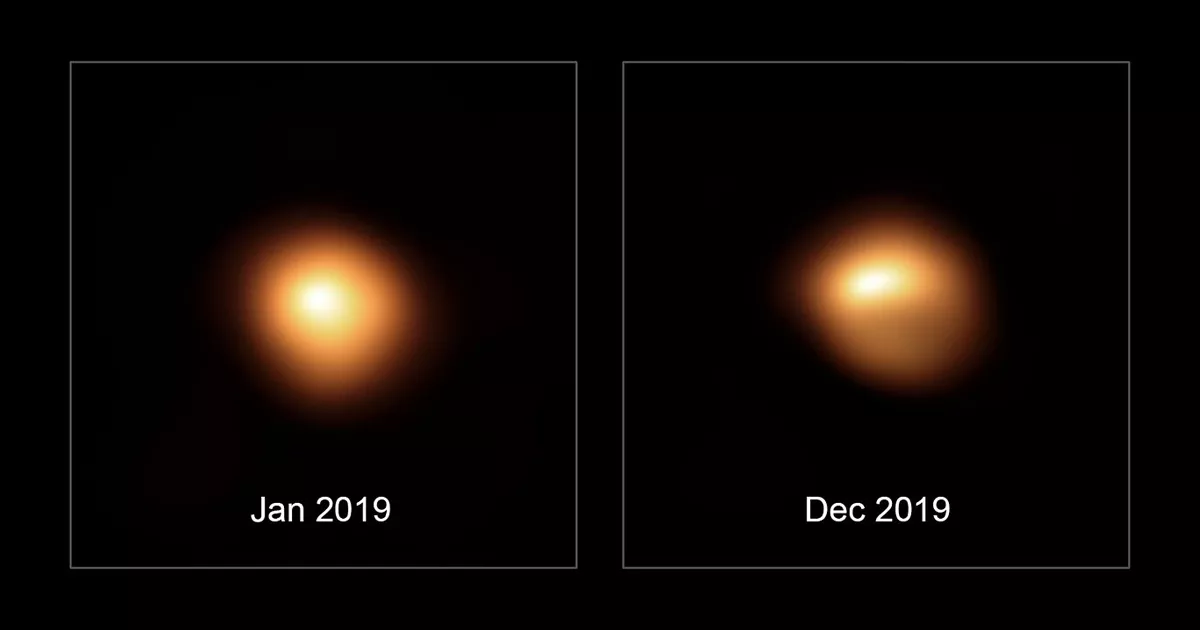But we’re still safe as it may be another 100,000 years until the star dies in a fiery supernova explosion, according to a new study by an international team of researchers, including a Hungarian astronomer.
Betelgeuse is one of the most recognizable stars of the winter sky, marking the left shoulder of the constellation Orion. An international team of scientists that included László Molnár, astronomer at the Research Centre for Astronomy and Earth Sciences (CSFK) of the Eötvös Loránd Research Network, took a closer look at this intriguing celestial object. Their work, published in The Astrophysical Journal, shows that it is both smaller and closer to Earth than previously thought.

The bright red supergiant has long fascinated scientists. But lately, it’s been behaving strangely. “It’s normally one of the brightest stars in the sky, but we’ve observed two drops in the brightness of Betelgeuse since late 2019,” Dr Meridith Joyce from The Australian National University (ANU), leader of the study, and frequent visitor of Konkoly Observatory of CSFK, said. “This prompted speculation it could be about to explode. But our study offers a different explanation. We now know the first dimming event involved a dust cloud. We found the second smaller event was likely due to the pulsations of the star.”
The researchers were able to use evolutionary, hydrodynamic and seismic modelling to learn more about the physics driving these pulsations – and get a clearer idea of what phase of its life Betelgeuse is in. According to co-author Dr Shing-Chi Leung from The University of Tokyo the analysis “confirmed that pressure waves – essentially, sound waves—were the cause of Betelgeuse’s pulsation.”

“It’s burning helium in its core at the moment, which means it’s nowhere near exploding,” Dr Joyce said. “We could be looking at around 100,000 years before an explosion happens.”
Co-author Dr László Molnár from the Konkoly Observatory of CSFK says the study also revealed how big Betelgeuse is, and its distance from Earth. “The actual physical size of Betelgeuse has been a bit of a mystery – earlier studies suggested it could be bigger than the orbit of Jupiter. Our results say Betelgeuse only extends out to two thirds of that, with a radius 750 times the radius of the sun,” Dr Molnár said. “Once we had the physical size of the star, we were able to determine the distance from Earth. Our results show it’s a mere 530 light years from us – 25 percent closer than previously thought.”
The good news is Betelgeuse is still too far from Earth for the eventual explosion to have significant impact here. “It’s still a really big deal when a supernova goes off. And this is our closest candidate. It gives us a rare opportunity to study what happens to stars like this before they explode,” Dr Joyce concluded.
The work of László Molnár was supported by the Premium Postdoctoral Research Program of the Hungarian Academy of Sciences. The study was also funded by the Kavli Institute (IPMU) of the University of Tokyo and facilitated by the ANU Distinguished Visitor’s program. It involved researchers from the US, Hungary and Hong Kong, as well as Australia and Japan. Original English text: Jessica Fagan (communications officer, ANU).
Contact: László Molnár, @email / lmolnar@konkoly.hu
The article is available for subscribers at https://iopscience.iop.org/article/10.3847/1538-4357/abb8db
The preprint version is freely available at: https://arxiv.org/abs/2006.09837
Link to the press release issued in Australia: https://www.anu.edu.au/news/all-news/supergiant-betelgeuse-smaller-closer-than-first-thought